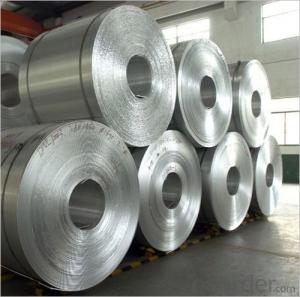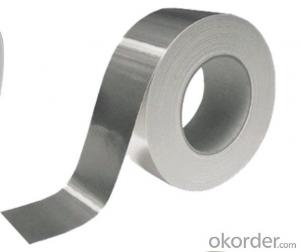Trane Aluminum Coil
Trane Aluminum Coil Related Searches
Led Light Bulbs For Ceiling Fixtures Led Lamps For Ceiling 42 In Ceiling Fan With Light Aluminum Coil Stock For Gutters Aluminum Foil For The Grill Hole Saw For Aluminum Plate Aluminum Tread Plate For Trailer Bow Plate For Aluminum Boat Aluminum Foil For Grow Room Aluminum Foil For Joint PainHot Searches
Stock Price For Aluminum Aluminum Coil Stock For Sale Aluminum Gutter Coil For Sale Used Aluminum Scaffolding For Sale 1/4 Aluminum Plate For Sale Aluminum Bar Stock For Sale Aluminum Round Stock For Sale Aluminum Diamond Plate For Sale Aluminum Scaffolding For Sale Craigslist 6061 Aluminum Plate For Sale Aluminum Dock Plate For Sale 7075 Aluminum Plate For Sale Aluminum Tread Plate For Sale Aluminum Checker Plate For Sale Aluminum Plate For Sale Near Me Plate Aluminum For Sale Aluminum Plate For Sale Aluminum Square Stock For Sale Aluminum Flat Stock For Sale Billet Aluminum Stock For SaleTrane Aluminum Coil Supplier & Manufacturer from China
Okorder.com is a professional Trane Aluminum Coil supplier & manufacturer, offers integrated one-stop services including real-time quoting and online cargo tracking. We are funded by CNBM Group, a Fortune 500 enterprise and the largest Trane Aluminum Coil firm in China.Hot Products
FAQ
- Hi i need to know what will happen to the impact strength of aluminum 2024 reinforced with Silicon carbide is treated to cryogenic temperature (nearly -200C). Will impact strength increase or decrease. Also will the impact strength vary with respect to the percentage of Silicon carbide.
- Aluminum 2024 doesn't have a transition temperature, it absorbs about 18n-m impact strength (via charpy tests I ran three weeks ago at my College course). This was constant between -150?C to +150°C (liquid nitrogen to a furnace). This excerpt from wiki: Cutting tools In 1982 at the Oak Ridge National Laboratories, George Wei, Terry Tiegs, and Paul Becher discovered a composite of aluminium oxide and silicon carbide whiskers. This material proved to be exceptionally strong. Development of this laboratory-produced composite to a commercial product took only three years. In 1985, the first commercial cutting tools made from this alumina and silicon carbide whisker-reinforced composite were introduced by the Advanced Composite Materials Corporation (ACMC) and Greenleaf Corporation. Leads me to believe it depends on how you mix the material in would make a difference. Silicon Carbide and aluminum make very strong tools, but would make it more brittle. The ceramic in a metallic crystal lattice (metal is a crystalline structure) would allow more voids to coalesce leading to a brittle fracture, but the initial strength would be improved because of substitution dislocations in the crystal structure (it would be more rigid, stronger, but more prone to sudden failure). Silicon carbide has low thermal expansion coefficient compared to aluminum also so when it gets really cold the aluminum would contract around the particles increasing the strength, but again, reducing ductility and causing fractures to occur more rapidly. Anyways, very interesting, you should do a bit of research on your own after this as I gave you some good places to work from (and I'm sure plenty of words to look up ;D )
- The marine industry heavily relies on aluminum coils for the construction of ships. These coils are essential in manufacturing various ship components and structures. The lightweight nature of aluminum coils is a significant advantage in ship construction. Compared to traditional steel, aluminum is much lighter, resulting in improved fuel efficiency and overall performance of the ship. This is particularly beneficial for larger vessels, as reducing weight helps minimize energy consumption and operating costs. Furthermore, aluminum coils offer outstanding resistance to corrosion, making them ideal for the harsh marine environment. Ships constantly face exposure to corrosive saltwater, which can deteriorate metal materials. By utilizing aluminum coils, shipbuilders can ensure that their vessels are well-protected against rust and corrosion, ultimately extending their lifespan and reducing maintenance needs. Additionally, aluminum coils are easily shaped and formed into various structures, providing shipbuilders with greater design flexibility. This versatility allows for the creation of intricate ship components like hulls, superstructures, and bulkheads. Aluminum's excellent weldability also simplifies the process of joining different sections of the ship, resulting in more efficient and streamlined construction. Moreover, aluminum is a highly sustainable material. It can be recycled without any loss in quality or performance, making aluminum coils an environmentally friendly choice for ship construction. This aligns with the increasing focus on sustainability in the industry. In conclusion, aluminum coils play a multifaceted role in ship construction. They offer lightweight, corrosion-resistant, and easily formable materials that contribute to improved fuel efficiency, durability, and design flexibility. Additionally, their recyclability makes them an environmentally conscious option. Overall, aluminum coils are a vital component in building efficient, durable, and sustainable ships.
- Limitations exist for the minimum coil width of aluminum coils due to various factors, such as the manufacturing process and equipment used. Generally, the coil width is restricted by the capabilities of the rolling mill or other processing machinery. The minimum coil width is typically determined by the size of the rolls or mandrels utilized during production. If the coil width becomes too narrow, it can lead to stability and integrity issues, making handling and transportation more challenging. Furthermore, a narrower coil width may impact the overall efficiency of the manufacturing process. Hence, it is crucial to take these limitations into account when establishing the minimum coil width for aluminum coils.
- i have about 100lbs of aluminum blocks and scrap.
- WOW.......they must be worth sum money. Lucky you!!!!!!
- Aluminum coils can be installed using various methods, each with its own advantages and applications. 1. Direct Attachment: To install aluminum coils, one can directly attach them to the desired surface, like a wall or roof. The specific method of attachment, whether it's screws, nails, or adhesive, depends on the application and surface condition. This method is commonly used for exterior applications such as siding and roofing. 2. Coil Stock Installation: Another method involves cutting the aluminum coil into smaller pieces known as coil stock, which are then installed individually. This method is ideal for projects that require a customized fit, such as wrapping window frames or creating trim pieces. Precise measurement and cutting are crucial for a perfect fit. 3. Coil Over Existing Material: In certain cases, aluminum coils can be installed directly over existing materials like old siding or roofing. This cost-effective method allows for updating the appearance of a building without the need for complete removal and replacement. It also saves time and labor compared to other methods. 4. Coil Cladding: Coil cladding is a popular installation method where the aluminum coil is wrapped around an existing structure, such as a column or beam. This provides both protection and aesthetic appeal to the structure. In architectural applications, coil cladding is often used to enhance the appearance of buildings and add a layer of protection to structural elements. It's important to consider the specific requirements of the application, surface condition, and desired outcome when choosing an installation method for aluminum coils. Consulting a professional or following manufacturer guidelines is recommended to ensure proper installation, maximize longevity, and maintain optimal performance of the aluminum coils.
- Indeed, high-magnetic field applications can make use of aluminum coils. Being a non-magnetic material, aluminum lacks any magnetic properties, rendering it appropriate for such applications. This is particularly beneficial as the presence of a magnetic field could potentially disrupt the coils' performance or function. Consequently, aluminum coils find wide utilization across diverse industries, such as electrical engineering, aerospace, and automotive, all of which frequently encounter high-magnetic fields. Furthermore, aluminum boasts a lightweight nature and excellent electrical conductivity, making it an optimal selection for applications that necessitate efficient and lightweight coil designs.
- Aluminum composite doors can indeed incorporate aluminum coils. These doors are crafted by sandwiching a core material between two aluminum sheets. The core material can consist of various substances, such as polyethylene or fire-resistant minerals. There are several benefits to using aluminum coils in the manufacturing of aluminum composite doors. Firstly, aluminum is a lightweight substance, rendering the doors easier to handle and install. Secondly, aluminum boasts exceptional resistance to corrosion, guaranteeing the doors' longevity and durability. Moreover, aluminum coils can be manipulated and molded with great ease, allowing for the creation of personalized designs and styles. The utilization of aluminum coils in the production of aluminum composite doors further provides flexibility in terms of color choices. Aluminum can be powder coated or painted in a myriad of hues, enabling a broad spectrum of options to cater to diverse architectural styles and individual preferences. In conclusion, aluminum coils are a fitting and widely employed material in the fabrication of aluminum composite doors due to their lightweight nature, resistance to corrosion, and customizable properties.











































